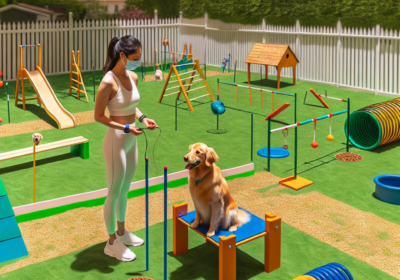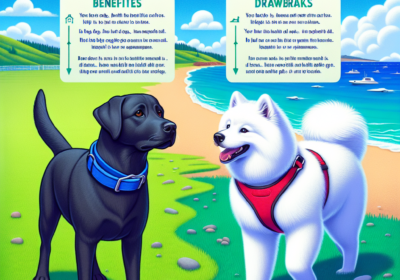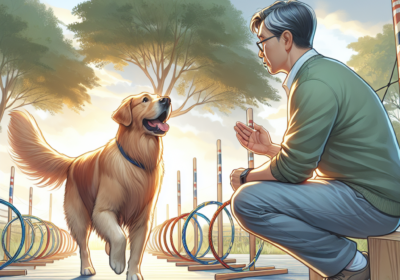What is the Average Lifespan of a Dog?

Small breeds tend to have the longest lifespans, with some reaching 16 years of age or more. Medium and large breeds typically sit on the lower end of average, with a life expectancy of 11 to 13 years.
There are several factors that influence how long your dog lives, including their genetics and health conditions. Regular veterinary appointments, diet and exercise are key to helping your dog live a long and healthy life.
Small Breeds
Small dog breeds have a much longer average lifespan than larger breeds. It doesn’t make a lot of sense, but this is a fact that researchers have discovered.
It’s not just the size of a dog that affects their lifespan; it also depends on how well you care for them, and whether or not they have certain hereditary diseases. Having a healthy diet, keeping them on a regular schedule for veterinary appointments, and taking preventative measures to prevent infectious disease are all good ways to ensure that your dog will live a long life.
The average lifespan of small breeds is about 15 years, and many of them live even longer than that! However, some small dogs are more prone to health problems than others.
This is due to their specific nutritional needs and a predisposition for hereditary disease. It’s important to consider this when choosing a small dog for your family, especially if you are unsure of the exact breed that you would like to adopt.
Some of the most popular small dog breeds are Havanese, Boston terriers, Papillons, and Pomeranians. These are all great choices if you are looking for a small dog that will be happy in your home.
These little pups are extremely sweet and loyal, and their hypoallergenic coats are often described as cotton ball soft. They are great family companions and get along with both children and other animals.
They’re also quite smart and love to play with their owners. They’re not overly aggressive with other pets and will do best in a household with older children.
If you’re looking for a playful and active small dog, consider the miniature pinscher. These small-sized dogs are alert and have a strong drive to chase after anything that moves, but they also are very intelligent and are highly trainable.
In fact, these are some of the smallest athletes around. They love to chase balls, run and jump, and are excellent competitors in agility and flyball competitions.
Another small dog that is popular for their longevity is the Maltese. They are known for having an excellent life expectancy, and they’re a great choice if you want a lap dog who will be a loyal companion for years to come.
Medium Breeds
The average lifespan of a dog varies from breed to breed, but is typically around 10-13 years. However, many of these lifespans are heavily affected by the breed, so it is important to take into account all aspects of a dog’s life and keep them healthy from day one.
Medium breeds are a good fit for most households, as they can be easy to care for and provide plenty of love. They are also less expensive to feed than large breeds, and they usually require less space in the home due to their size.
They tend to be more active than smaller dogs, so you may need to exercise them more often. They are also more likely to develop medical conditions that affect their joints and digestive tracts, like hip dysplasia or arthritis, which can lead to costly vet bills later in life.
Some breeds that fall into this category include American Staffordshire terriers, Australian shepherds, and English springer spaniels. They are all intelligent, lively, and loyal companions that can make excellent family pets.
Another popular medium-sized breed is the standard schnauzer, which has a bold and spirited personality. These playful dogs can be stubborn without consistent training, but they are very loving and loyal.
The soft-coated wheaten terrier is another medium-sized breed with a happy and playful demeanor. These smart dogs need regular grooming to keep their coats in tip-top shape. They also need consistent training to ensure they are properly socialized with new people and other dogs in the house.
They are an excellent choice for families with children, as they are gentle and obedient. They are also good watchdogs and alert to stray cats or other animals.
These pups are also very loyal to their owners and will follow them wherever they go. They also love to play games, and will be extremely interactive with their humans.
The average lifespan of medium breeds is about 11-13 years. They are generally healthy and prone to fewer health problems than small or large breeds, although some can be susceptible to difficult-to-manage diseases such as cancer. It is best to monitor your pet’s diet, exercise, and mental stimulation to help them live their longest and healthiest possible life.
Large Breeds
The average lifespan of a dog depends on its breed and size. Large breeds tend to live longer than small or medium dogs. They also are more likely to be healthy than smaller breeds.
Despite their long lifespans, large dogs aren’t without their share of health issues. They are prone to problems such as dental problems and low blood sugar, so it’s important to feed them a high-quality diet and have regular vet visits to ensure they stay healthy.
Some dogs may have a higher risk of death at younger ages than others because of their genetic predisposition to certain diseases, such as hip dysplasia and cataracts. This is a common phenomenon in some breeds, such as the Labrador Retriever and the Great Dane.
According to the American Kennel Club, the average lifespan of large breeds is about seven years. However, it’s not uncommon for them to reach 20 years or more, especially in the case of Bluey, an Australian cattle dog who lived nearly 30 years!
These large breeds are typically gentle and affectionate, making them great family dogs. They can also be used as therapy dogs and are good for children because they are very patient with young ones.
A big dog can be intimidating, so they need to be socialized and trained as early as possible. They should also be given plenty of exercise, which will help them to maintain a healthy weight and prevent injuries.
In addition to being a good companion, many of these large breeds are loyal and trustworthy. They also make excellent protectors and are highly intelligent, so they can be taught to respond to commands.
These dogs have a long and happy life when properly cared for, but they do require regular veterinary visits to keep their teeth and knees in tip-top shape. They’re a great choice for families with lots of space to spend time outside and with someone who has the time and energy to care for them.
Giant Breeds
If you’re looking for a large companion, there are plenty of options. However, many large dog breeds are prone to certain health issues, and their lifespans can be affected by genetic predispositions.
Typically, medium-size dogs live 10-13 years while large breeds can live up to 15-20 years. Lifespan and disease risks vary by breed, so check with your vet for more information on a specific breed’s average lifespan.
Some giant breeds are known for their gentle personalities, while others have strong hunting and guarding instincts. These breeds may require more exercise and training than smaller ones, but they’re also loyal, loving pets who will be happy to stay by your side for as long as you need them.
Giant breeds like the Saint Bernard are especially good family dogs. They’re often used as search-and-rescue animals, but they can also make excellent service dogs. They’re incredibly patient, and they love to play with children.
Another popular giant breed is the Dogue de Bordeaux, or French mastiff. This slobbery hunk of a dog is highly intelligent and a great companion for anyone with time for a big, loyal pup.
Originally bred in the French countryside, Dogue de Bordeaux dogs have been used for hunting, cattle driving, and even as war dogs. Despite their wrinkled appearance, they’re extremely sweet and affectionate.
Though they’re a great family pet, they do need obedience training to ensure that they can be good housemates and behave well around other pets. They’re also a high-energy breed that requires daily exercise.
They can also be prone to skin problems, so do your homework before you adopt one of these giant dogs.
If you’re considering a giant dog, it’s important to remember that they’ll require more food, medicine, and grooming than a small or medium breed. Moreover, these dogs will need more space and exercise, so they’re best suited for people with lots of time to dedicate to a big dog.
The average lifespan of these dogs varies, but they’re generally very healthy and can live up to 15 years or more. The only real reason they might not reach this age is if you choose a giant dog that is prone to health concerns, such as a breed that’s prone to skeletal problems or an aggressive personality.







![The Dog Podcast Uncovers Startling Truths About What We Feed Our Dogs [Press Release]](https://yourhomeandgardenhub.com.au/wp-content/uploads/2024/08/dog-bowl-400x280.webp)


